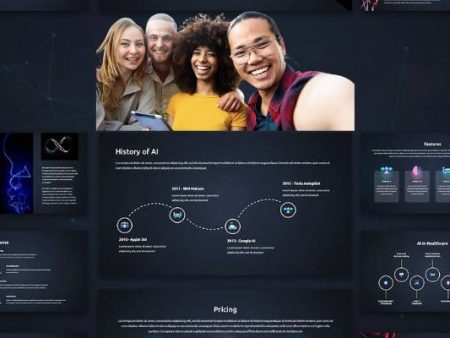Anyone who’s ever sat in a conference room under dim lights, staring at an endless barrage of bullet points, knows the pain of presentations. They’ve long been the necessary evil of corporate, academic, and even personal storytelling. PowerPoint and Keynote ruled for decades, but the tides are shifting.
Enter AI-driven presentation tools. Suddenly, you don’t have to spend hours picking the right template, adjusting text boxes, or wondering whether your font size screams “rookie.”
Instead, you type a prompt—and the software does the heavy lifting. It’s a bit surreal, honestly. But here’s the kicker: not all tools are created equal.
In this article, we’ll compare Canva, Beautiful.ai, Tome, and others in the space. I’ll break down their strengths, weaknesses, quirks, and the very human questions they raise.
Along the way, I’ll touch on how ai presentation tools are shaping industries, why younger generations are embracing them faster, and even how they’re being used in classrooms and lecture halls.
Why Presentations Are Ripe for Disruption
Before diving into the tool breakdown, it’s worth asking: why presentations? Why is this space exploding with AI innovation?
The short answer: presentations are everywhere, but they’re a time sink. According to a 2022 Prezi survey, professionals spend an average of 10 hours per week working on presentations.
That’s more than an entire workday. And yet, half of that time is eaten up not by storytelling, but by design drudgery—formatting slides, resizing images, fiddling with layouts.
This is where AI comes in. By automating design and content structuring, these tools free up time for higher-order thinking. The question isn’t whether they’ll disrupt PowerPoint—it’s how fast, and whether that disruption is for better or worse.
Canva: The Crowd-Pleaser
Let’s start with the tool most people know: Canva.
Strengths
- Accessibility: Canva is famously easy to use. Drag-and-drop, endless templates, and Magic Design (its AI generator) make it approachable for beginners.
- Ecosystem: Canva integrates not just presentations but social posts, resumes, infographics, and more. It’s a one-stop visual shop.
- Collaboration: Teams can edit in real time, which is a lifesaver for distributed workplaces.
Weaknesses
- Overfamiliarity: Let’s be honest—you can spot a “Canva deck” from a mile away. The polished-but-generic look can sometimes feel cookie-cutter.
- Surface-Level AI: Magic Design is a nice shortcut, but it lacks the depth of more advanced AI-first platforms.
For quick projects, Canva is unbeatable. But if you’re aiming for something unique or high-stakes—say, a million-dollar pitch—it may fall short.
Beautiful.ai: The Design Perfectionist
Beautiful.ai positions itself as the “designer in your pocket.”
Strengths
- Smart Templates: The platform forces discipline by snapping content into pre-defined structures. Your slides will always look clean and professional.
- Consistency: Once you set branding rules, Beautiful.ai ensures every slide follows them. That’s a dream for corporate teams.
- AI-Polish: It shines at turning messy content into something that looks boardroom-ready.
Weaknesses
- Rigidity: The same discipline that keeps decks clean can feel constricting. If you want creative freedom, you’ll get frustrated.
- Steep Learning Curve: It’s not as plug-and-play as Canva.
Beautiful.ai is perfect for companies that prioritize brand consistency and want presentations that never embarrass them design-wise. But for experimentation? Not so much.
Tome: The Storyteller
Tome takes a different approach. Instead of focusing on design templates, it emphasizes storytelling.
Strengths
- Narrative-Driven: You give Tome a prompt, and it builds a slide deck structured as a story. It’s closer to a scriptwriter than a graphic designer.
- Interactive: Tome allows embedded video, animations, and more immersive elements. It’s not just slides—it’s almost a mini-app.
- AI Depth: Its prompts feel more responsive, generating decks that lean toward originality.
Weaknesses
- Beta Feel: Sometimes it feels like Tome is still “figuring itself out.” You’ll get the occasional awkward slide or odd phrasing.
- Niche Appeal: It may not be right for everyone—especially traditional corporate teams used to bullet-point decks.
Tome is ideal for startups, creatives, and storytellers. It’s less about polish and more about narrative punch.
Beyond the Big Three: The Ecosystem Expands
Other players are carving their own space.
- Gamma: Known for interactive, card-based presentations that feel fresh.
- Pitch: Aimed at startups, with an emphasis on collaboration and fundraising decks.
- Visme: A hybrid of Canva and Beautiful.ai, offering visuals for both presentations and infographics.
- Microsoft Copilot: A powerful choice for those already locked into the Microsoft ecosystem, generating decks directly from Word docs or meeting notes.
The ecosystem is expanding fast, and competition is fierce.
How AI Presentation Tools Are Being Used
So, how ai presentation tools fit into the bigger picture? The answer varies by sector.
- Business: For pitches, internal updates, and client presentations, AI saves time and enforces branding.
- Education: Teachers and students are embracing these tools to simplify lesson prep. There’s also a growing conversation around ai for academic presentations:—whether it levels the playing field or undermines learning.
- Marketing: Brands use AI to churn out decks for campaigns, product launches, or reports without hiring design teams.
- Nonprofits: Smaller organizations can now produce professional-quality decks without big budgets.
The Human Question: Can AI Replace Graphic Designers?
This is where things get thorny. Can ai replace graphic design work?
My take: not entirely. AI democratizes design, making it accessible to people who’d otherwise struggle with it. But professional designers bring cultural awareness, originality, and aesthetic judgment that algorithms can’t mimic. AI gets you to “good enough.” Designers take you to “wow.”
The future may be hybrid: AI handles the repetitive work, humans add the nuance.
Why Gen Z Professionals Are Leading the Charge
A fascinating trend is that adoption skews young. Surveys show that why gen z professionals are leading the charge with AI tools.
Why? They’ve grown up in a digital-first world. For them, using AI isn’t “cheating”—it’s efficient. They’re also less tied to traditional workflows and more open to experimenting with emerging platforms.
For older generations, there’s still skepticism. Concerns about creativity, originality, and ethical boundaries loom larger. But Gen Z sees AI as an extension of their toolkit, not a threat.
Comparing AI Presentation Tools: Strengths Side by Side
Here’s a simplified comparison of the top tools:
| Tool | Best For | Design Flexibility | Storytelling Strength | Ease of Use |
| Canva | Quick, broad use | High | Medium | Very easy |
| Beautiful.ai | Corporate consistency | Low | Medium | Medium |
| Tome | Creative narratives | Medium | High | Easy |
| Gamma | Interactivity | Medium | Medium | Easy |
| Copilot | Enterprise use | Medium | Medium | Easy (if in MS suite) |
The Risks: Creativity, Homogenization, and Over-Reliance
We can’t ignore the risks.
- Sameness: With millions using the same AI templates, decks risk looking eerily similar.
- Skill Loss: If students rely too much on ai for academic presentations:, will they lose the ability to structure arguments themselves?
- Over-Reliance: There’s a danger in outsourcing not just design, but thinking. The tool should assist, not replace.
Conclusion: The Balance Between Efficiency and Humanity
So, where does this leave us?
AI tools like Canva, Beautiful.ai, and Tome are reshaping how we create and consume presentations. They save time, lower barriers, and, at their best, free us up to focus on storytelling and delivery.
But they also raise uncomfortable questions about creativity, originality, and dependence.
The truth is, the tools are just that—tools. They reflect the intent and skill of the person wielding them. Whether they enhance or diminish presentations depends on us.
And maybe, just maybe, the next time we walk into a boardroom, a classroom, or a virtual pitch, the slides won’t feel like a chore but like what they were always meant to be: a stage for ideas worth sharing.


